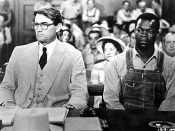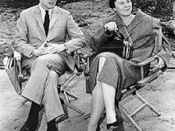In the book "To Kill a Mockingbird" Harper Lee presents the prejudice of a small American County passed through generations towards minority groups. The most targeted group for this prejudice was the black community. Even though the book is set in the mid nineteen thirties, Lee shows that the prejudice that is present in her society when she wrote the book.
Through the tale the reader sees through the eyes of Scout Finch and her views are shared. Scout becomes involved with issues present in her society such as racism and poverty. To develop her theme of a depression stricken county, Lee uses descriptive language to further her goal of making the county worn, a few examples of these are who description of the courthouse which is dilapidated and the Ewells house which is behind a garbage tip. Using metaphor Lee likens the death of Tom Robinson to that of songbird's, a needless death.
Lee also uses characters as archetypes, for example, Atticus is the archetype for hope, Bob Ewell is the archetype for the poor, and Tom Robinson is the archetype for all those who were dealt injustice at the hands of the American Justice System.
The narrator Scout is a very unusual little girl, both in her own qualities and in her social position. In her own qualities she is exceptional because she is smarter and more inquisitive than most other children her age. In terms of her social identity, she is unusual for being a tomboy in the prim and proper Southern world of Maycomb County.
One quickly realizes when reading "To Kill a Mockingbird" that Scout is who she is because of the way her father Atticus has raised her. He has nurtured her mind, conscience, and individuality without pulling her down in fussy social hypocrisies...


